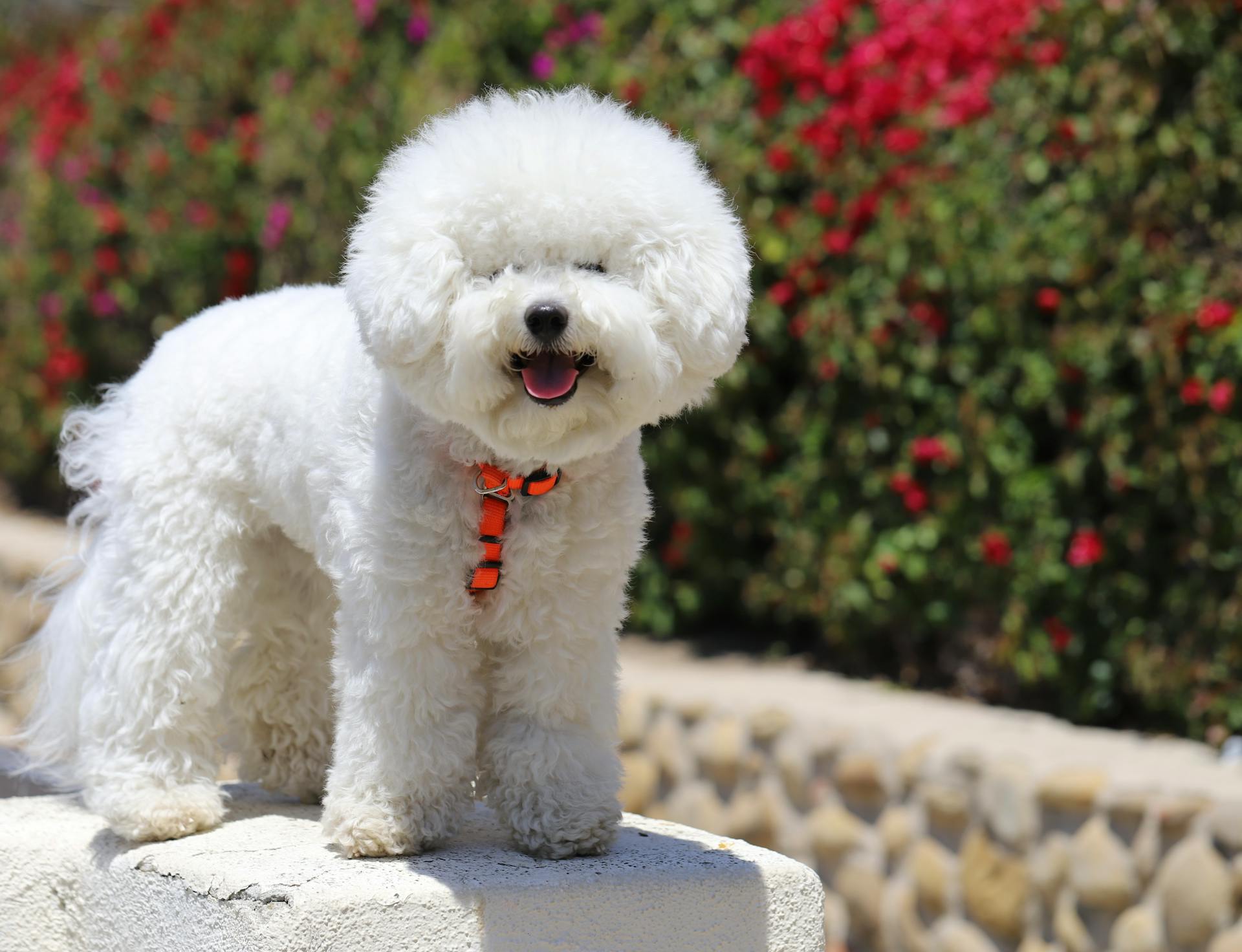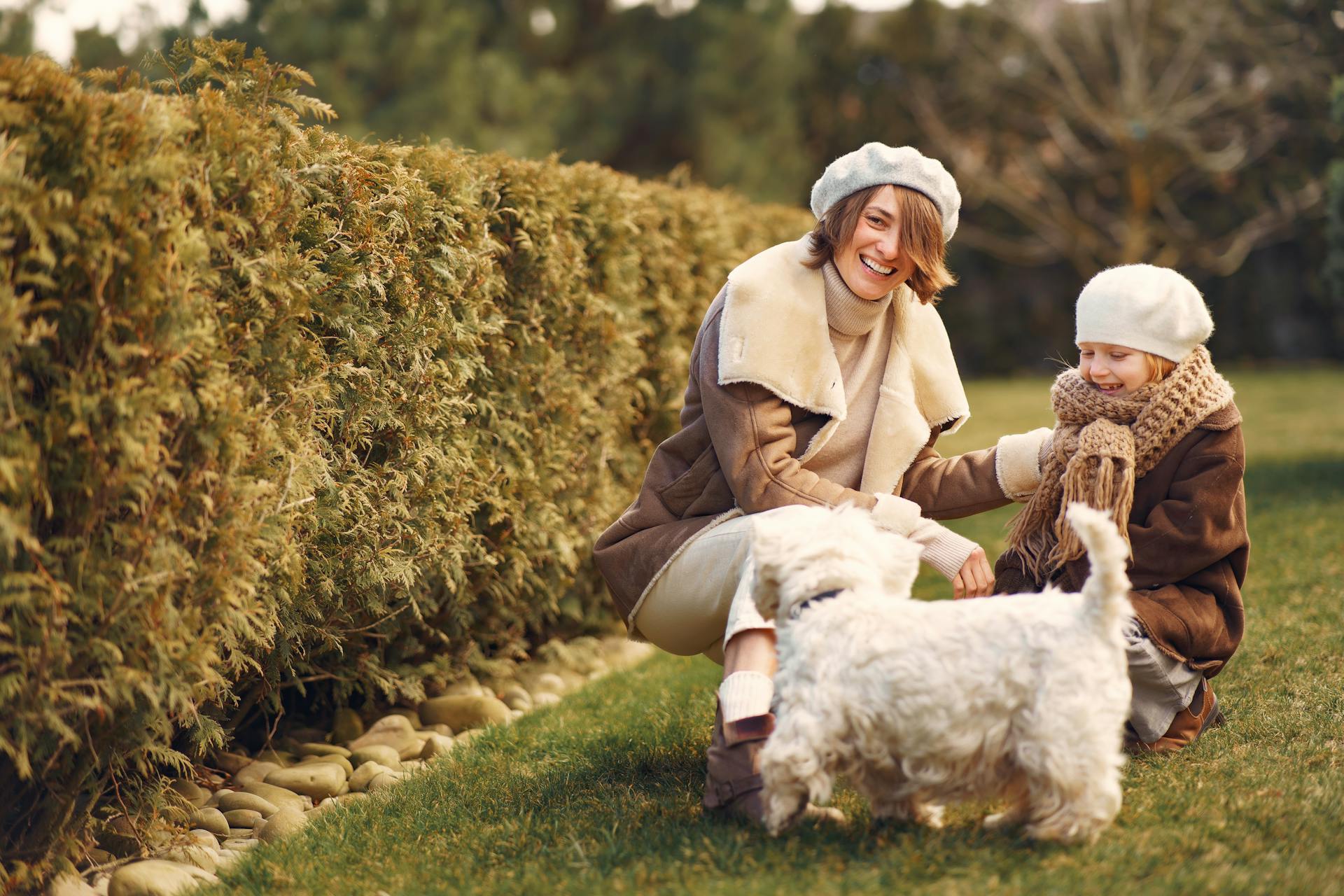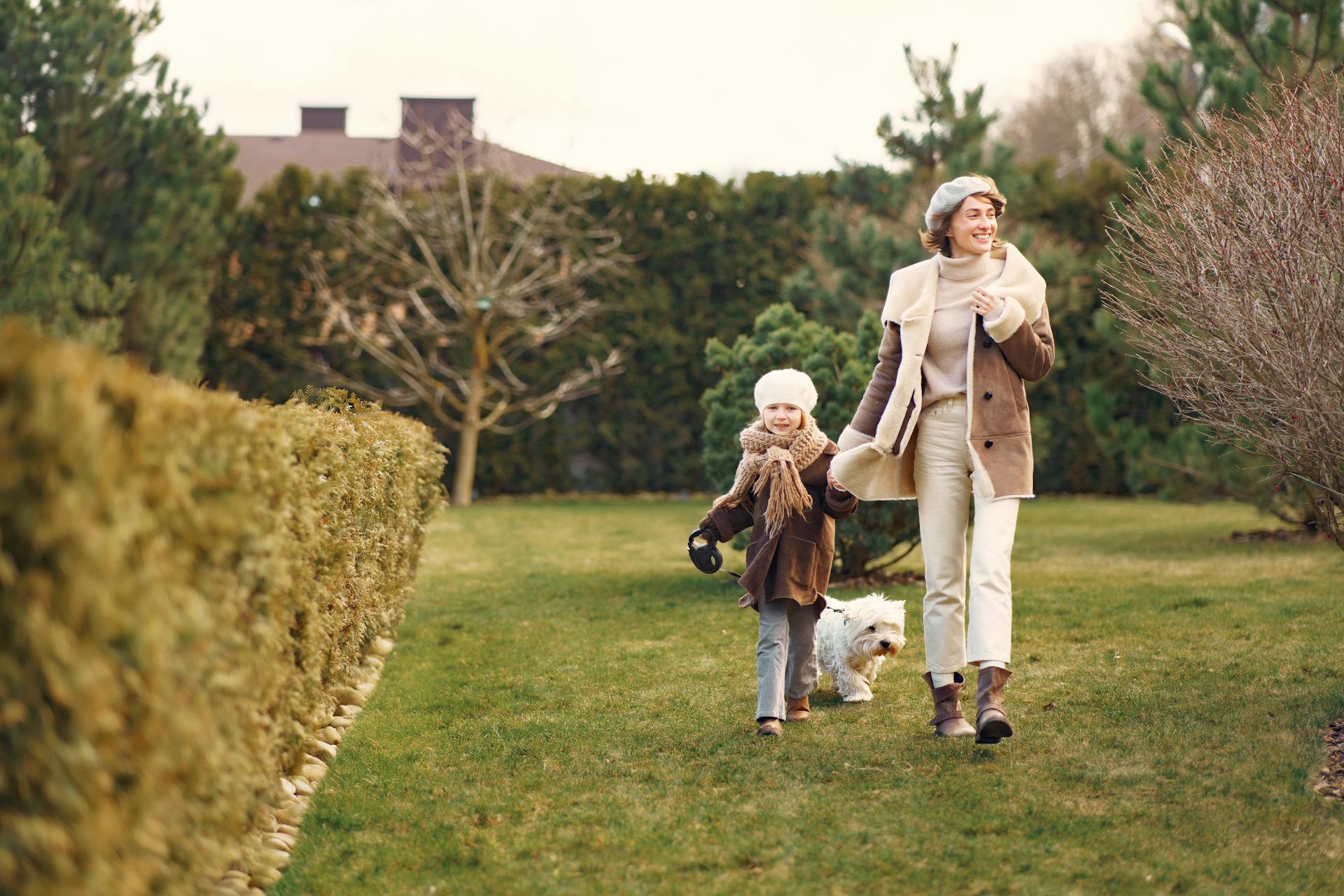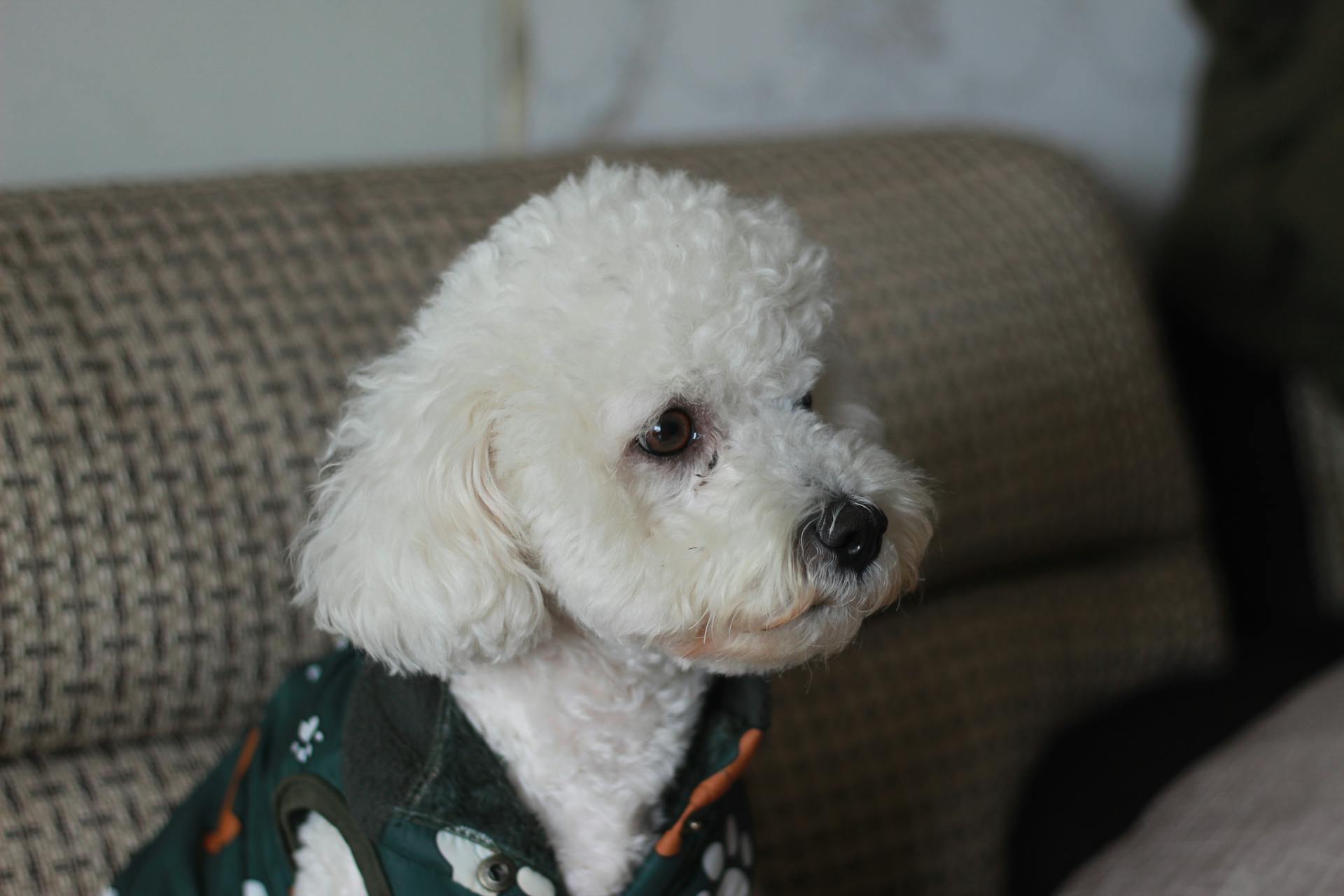
The Bichon Frise is a small, fluffy dog breed that makes a great companion for many families. They typically weigh between 7-12 pounds and stand about 9-12 inches tall.
Their small size requires regular grooming to prevent matting and tangling of their fur. This includes daily brushing and regular trimming every 6-8 weeks.
Bichon Frises are playful and gentle dogs that are easy to train. They are highly social and require regular interaction with their owners to prevent boredom and destructive behavior.
Their friendly and adaptable nature makes them a great choice for families with children or for people who live in apartments.
For another approach, see: Small Breed Bichon Frise
Physical Characteristics
The Bichon Frise Standard is a delightful breed, and their physical characteristics are definitely worth noting. Ideal height is between 23-28 cms (9-11 ins) at withers.
Their small stature makes them perfect for apartment living or as a companion dog.
Size
When considering the physical characteristics of a particular breed, one key aspect is size. The ideal height at withers is between 23-28 cms (9-11 ins). This is a crucial measurement to keep in mind when evaluating the breed's overall stature.
Characteristics
The breed's temperament is quite endearing, with a merry and playful personality that's sure to bring a smile to your face.
It's sensitive, gentle, and affectionate, making it a great companion for many families.
With a soft, inquisitive expression and sparkling dark eyes, this breed is sure to capture your heart.
Their facial features are truly one-of-a-kind, and it's no wonder why many people fall in love with this breed's unique look.
History and Appearance
The Bichon Frise is a breed with a rich history dating back to the 14th Century, originating from the Mediterranean region. Traders adopted these dogs as companions and entertainment on their voyages.
The breed was known as the Tenerife Terrier and traveled across the Mediterranean trade channels before making its way to mainland Europe, specifically to Bologna, Italy. The Bichon family consisted of the Bolognese, Havanese, Maltese, and the Tenerife Terrier.
A Bichon Frise is a small, compact dog with a dense, white coat that gives it the appearance of a white powder puff. Its high head carriage and plumed tail carried over its back make it a smart-looking dog.
Expand your knowledge: Bichon Frise Shih Tzu Mix Black and White
Appearance

The Bichon Frise has a unique appearance that's hard to miss. Its dense, white coat gives the breed the appearance of a white powder puff.
One of the defining features of the Bichon Frise is its high head carriage, which it carries with confidence. This, combined with its plumed tail carried over its back, gives it a jaunty and lively appearance.
The Bichon Frise has a medium bone structure, never appearing coarse or fine, which adds to its sturdy and compact appearance. Its coat is a close plume of white loose curls that requires regular grooming.
Bichons can run quite fast, reaching speeds of 10-22mph, making them a lively and energetic breed.
Take a look at this: Are Bichon Frise Good Dogs
Bichon Frise History
The Bichon Frise has a rich history that spans centuries. The breed originated from the Mediterranean, with references dating back to the 14th Century.
These dogs were highly valued by traders who adopted them as companions and entertainment on their voyages. The Tenerife Terrier, as they were known, traveled across the Mediterranean trade channels.
The Bichon family consisted of several breeds, including the Bolognese, Havanese, Maltese, and the Tenerife Terrier. They were highly sought after by royal courts and aristocrats.
In the 14th Century, the breed was introduced to mainland Europe, specifically to Bologna, Italy. Frances I, King of France, adopted Italian culture and brought it back to France, where the breed became a popular companion.
The breed was listed in a 1935 French magazine as the "Dog of: Tenerife, Havana, Bologna, Baleares, Peru, Holland, and Buffon." This classification recognized the breed's diverse origins.
In 1959, the breed was recategorized into two groups: "maltese with straight hair" and "bichon of the curly hair." This classification helped to standardize the breed.
A different take: Bichon Frise Curly Hair
Grooming Requirements
Brushing your Bichon Frisé daily with a slicker/pin brush is essential to remove excess coat and detangle the hairs.
Daily brushing is recommended to prevent matting, and a fine comb that reaches down to the skin should be used to ensure mats cannot form.
A different take: Brushing a Bichon Frise
Professional grooming is necessary every 4 weeks, which involves bathing, brushing out/matt removal, and an all-over trim/style.
A Bichon Frisé's coat can mat if not brushed and combed down to the skin at least every other day, making daily brushing a must.
Professional trimming every month or two is also necessary to maintain the Bichon shape and prevent matting.
The breed does not shed heavily, but loose hairs can tangle in the coat to create mats, which can be painful and uncomfortable for your dog.
On a similar theme: Bichon Frise Not Groomed
Training Requirements
Bichons are intelligent and easy to train, making them a great fit for families.
They excel in roles like therapy dogs and performing party tricks, showcasing their ability to learn and please their owners.
The breed is eager to please, which makes training a breeze.
Bichons are naturally playful and happy, which means they're always up for a challenge and a reward.
They're a charming companion for people of all ages, and their easy trainability makes them a great addition to any family.
Here's an interesting read: Are Bichon Frise Easy to Train
Frequently Asked Questions
What two breeds make a Bichon Frise?
The Bichon Frise is a cross between the Water Spaniel and the Standard Poodle, with influences from other small white breeds. This unique ancestry contributes to the Bichon Frise's distinctive appearance and temperament.
Featured Images: pexels.com


